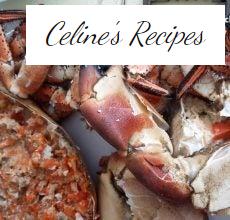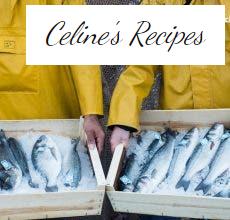
My child does not eat … Should we make him eat? … I already do a full spoiler for you … NO .
We are a generation of adults who have to lead the way. Most of us are not served by the model of education that our parents used, that our teachers taught, the gender roles that they taught us …
The moment when social changes changed from cruising speed to light speed, and the world we lived as children no longer exists, caught us squarely. So we have to create a new one, and this world will surely be obsolete when we are grandparents.
Educating in eating and its battles is part of that, although this topic is a little slower. I mean that there is no longer a debate about whether to force a child to learn , that saying of ” the letter with blood enters .” But there is still debate about whether to force a child to eat, punish him at the table, blackmail him or threaten him .
.instagram-follow img{width:100%;height:auto;} @media screen and (min-width: 1000px) {.instagram-follow {display:block;clear:both;float:right;width:50%;margin-left:1em;}}
Although these two aspects were complementary and part of an obsolete social model , the part referring to food is still swarming in society.
The first steps of a new model of emotional management are hard. You are still surrounded by grandparents, neighbors, caregivers in the nursery or school canteen … who continue to operate with that authority system and tell you that if your child does not eat it is because you are not using those pressure maneuvers.
But your intuition says there has to be another way. It cannot be that we are in courses of positive discipline, of responsible authority, of learning to learn without fear, and then you sit the child at the table and start to threaten him. If you have seen yourself in that situation, surely you have thought that there has to be another way of doing it.

What leads us to that behavior?
Very few parents would choose this model of coercion and threats from the tranquility of a moment of calm: “Carmen, look, I’m thinking that tomorrow, when I don’t want to eat, I’m going to try to threaten her with this or that argument … what are you It seems?”
Rather we get there through despair, the loss of control of a situation that activates a powerful message embedded in our minds from generation to generation: IF YOU DO NOT EAT-SICK-DIE !!!! And we go crazy.
And the child in front of us only sees his or her hysterical dad and I’m not surprised that he thinks “ I don’t know what’s going on but I ‘m passing ” or “ wow… I managed to make him hysterical, how cool! “Or in the worst case” I do not know what is happening but I am getting very scared … I am going to do what he tells me because I am afraid “.
Which one do you like the most? To me none
It is important to know what is activated within us in order to manage it. Obviously our despair is proportional to the number of occasions in which the situation repeats itself, and not every day will it have the same cause. But there are two situations that are usually the most common.
- One is the fear of their disease, child malnutrition, growth deficit etc.
- The other is that he is challenging me and if I let him not eat I am losing leadership and letting him do what he wants. In this case, leaving the challenge on a tangent is the most useful, but you will have to rehearse.
You may find it helpful to design a phrase that turns off those overreaching fears-beliefs. Something short, that calms you and that you can use as a pigtail in those moments of despair.
Design yours and in the most difficult moments repeat it inside yourself over and over again until you can pass to the most adolescent indifference that you are capable of.
Examples
– “Death by starvation is a slow death, although I don’t eat in three days it gives me plenty of time to take him to the hospital”
And with the calm of that plan B that stands between the kitchen and death … you continue to do your thing, pretending to be as indifferent as possible.
– “He wants to take a pulse but I pass, I only fight with one of my size”
They are long examples so that the phrase is well understood, but the ideal is that you later shorten them to a reduced version that inspires that attitude.
Humor deactivates excessive dramatizations very well, but you will have to find an argument that works well for you. Write the ones you can think of and from time to time read and see which one inspires you the most.
Not forcing to eat does not mean absence of rules.
The key to making that nonchalance work is that it is accompanied by rules.
- Let’s say the attitude is that the child can eat or not, he decides. But the rest of the lunchtime rules are still your territory and if you use them well the girl or the boy will come to the conclusion that you earn something by eating: free time, right to prostr…
- Establish schedules, times, meal sequence, everything that helps but in a video game plan. In other words, there are some screens to overcome and then you access other desirable ones, without more.
- Avoid entering rewards and punishments that will only personalize behavior by making eating a way to please or challenge the adult.
- So the key is to state the rules clearly and then get out of the way, so that the child establishes his own relationship with those rules. It is difficult, I know, but I try to find the rules that work for you. When you find it working it will be well worth it. From then on you will know where to continue.
For example, it is very useful to delimit and communicate the time of meals. When mealtime is over for everyone (even if you haven’t eaten anything) everything is collected and there will be nothing to eat until the next opening.
That is, if after a while you ask for something because you are hungry, resist! Explain that it is now closed and must wait for the next shift. Without dramas and without rewards or punishments.
If you are at a green light and you linger and don’t cross, then change to red and you have to wait. It does not change to punish you, it changes because social norms mark the times to organize things, uses and places. It is natural and they understand it because it happens continuously. Hourglasses are very useful to mark times.
My advice is to use them only to mark the last 10 minutes of the eating shift and only if the food is being difficult. Once you understand this rule, remembering that there will be little to finish a meal shift will be enough.
Reach agreement on number of bites. Food sandwiching guidelines: one vegetable / two pasta / one chicken and one free (your choice) and then repeat! Everything that helps you to establish a scheme that she likes and that you use to hide your anxious interest in eating at once.

And in special situations … make it easy.
When the child has passed a course of antibiotics . When you are experiencing a stressful situation as an adaptation to a new school. Or just low-appetite kids who are only hungry in the summer after going to the beach – make it easy.
- Use smoothies like banana milk and a little pure cocoa. Sponge cakes of dates and nuts. Vegetable pâtés with rice syrup or a jam without added sugar.
- Easy things to eat and if possible with a sweet touch (which does not mean with white sugar).
- Offer her foods in a format she likes: drunk, or something to grab with her hands. And super powerful small bites so that with two or three you cover many nutritional needs.
- Of course, if the situation is still maintained over time, consult your pediatrician. Perhaps taking a probiotic gives you the missing push, or you may need other help.
And even if there is nothing, take it just to stay calm, because that is also necessary to be able to manage meals with the tranquility and creativity that you need to design.
Did you like it? Share it!
Share Tweet Pin it To print
Receive a weekly email with new recipes and yummy recommendations.
Think of Pixels SL as the owner of Recetasderechupete.com, it will use the data you provide in this form only to send you blog updates. We treat your data with respect. For more information see the Privacy Policy . You can change your mind at any time and unsubscribe by clicking on the footer of any email you receive from this website, or by contacting [email protected]. Yummy recipes use Mailchimp as a platform for sending emails. Mailchimp is covered by the EU-US Privacy Shield agreement, approved by the European Data Protection Committee. By submitting this form you agree that your data will be transferred to MailChimp to process it in accordance with its Privacy Policy .
If you liked this article you will like:

The perfect barbecue exists!

Pumpkin. Properties, benefits and our best recipes







